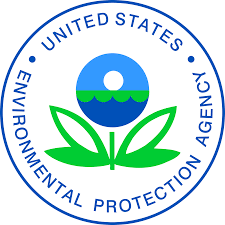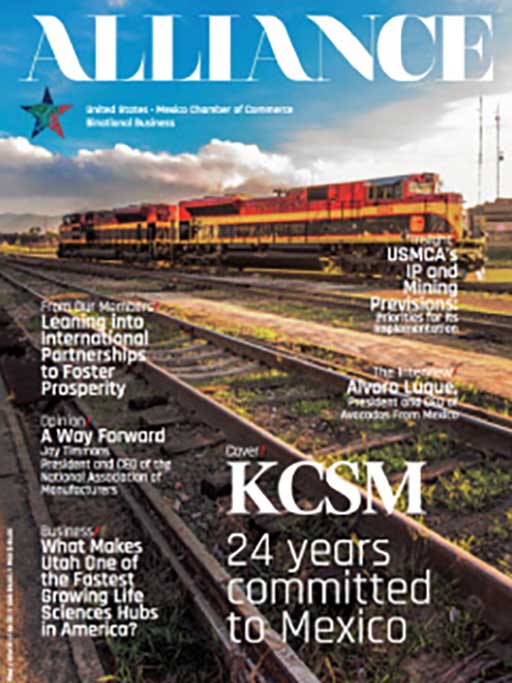PROGRAMS & ACTIVITIES / PAST
THE SEVEN PRINCIPLES OF ENVIRONMENTAL STEWARDSHIP

Dissemination of EPA Environmental Information to Minority Communities in the U.S.-Mexico Border Region.
DISSEMINATION OF EPA
ENVIRONMENTAL INFORMATION TO MINORITY COMMUNITIES IN THE US-MEXICO BORDER REGION
The United States Environmental Protection Agency (EPA), its counterpart agency in Mexico – SEMARNAT, the Attorney General for the Environment (PROFEPA) and the US-Mexico Chamber of Commerce have been engaged in a process and a dialogue that have come to be known as the “7 Principles of Environmental Stewardship for the 21st Century, or “7 Principles.” Part of the process was the mutual signing of a 7 Principles document outlining 7 separate and definitive steps to make environmental compliance and accountability both measurable and credible. At least 3 of the principles directly address the need for improved environmental information to the public from companies engaged in economic activities. And while the focus of the 7 Principles is the US-Mexico border region, the principles apply to the whole region experiencing rapid and continuing economic development under the North American Free Trade Agreement (NAFTA).
As part of the Chamber’s commitment to these principles, the Chamber has indicated its willingness to work with the EPA Region 9 lead for the Environmental Information Working Group, Region 6 and others, to assist in addressing the environmental information needs of communities in the border region that have not had adequate access to environmental information. Whether impacted by the “digital divide” or any other circumstances that inhibit communities’ access to information, the Chamber has expressed a determination to work with the EPA and the impacted border communities to address this important environmental information challenge. The Chamber believes that there is a real potential to stimulate the development of critical skills through training and dissemination of environmental information can contribute to sustainable development along the Southwest U.S. border region, and to foster promising environmental careers through capacity-building at the community level.
A principal Chamber purpose is to make dissemination of environmental information possible through capable computer technology packages, audio-visual aids and multi-media. For this purpose the Chamber has selected 6 sites (“centers’) located in the Border States to receive its capable computer technology packages for the direct purpose of enfranchising those least able to access information.
This concept involves enabling technology and connectivity to information and other resources available via the Internet, multi-media, videos and curriculum development that is based upon a model tailored for each target community to provide appropriate level environmental and technology education and training, and direct outreach and assistance to the target communities. This approach will also provide entry to virtual private networks of small to medium sized enterprises along the Southwest border in another Chamber Project — Wiring the Border.
To accomplish the above purpose, the Chamber entered into a cooperative agreement with the EPA to establish initial Pilot Sites in two of the southwest border states. The program will accomplish the following tasks in its effort to disseminate EPA Information at each of the initial sites in California and Arizona:
Conduct a needs assessment at each site to determine the EPA information required by the community
Install computer systems with internet access (2 computers per site)
Focuses on refining a base model for the program to promote the dissemination of the EPA Safety Health and Environmental Management Development Multimedia Laboratory information throughout the border regions.
Provides site access for participation in the “Seven Principles of Environmental Sustainability ” program
Expands dissemination of the program through the “Wiring the Border ” program to the SME industrial/manufacturing sectors along the border
Develop an EPA portal utilizing the existing connectivity offered by the USMCOC, WTB and “7 Principles”(7P) web sites
Development of SHEMD and program questionnaires, conduct of participant interviews and observations at each site
Preparation of feedback reports for each site including interviews, observations and recommendations for the overall program
The Pilot Sites selected are willing and able to directly and effectively serve environmental information needs of border region communities with large Hispanic or Native American populations that lack effective access to a broad range of environmental information.
The issue of access to information will be addressed in this approach as two elements: (1) physical access; and (2) training and knowledge (learning) access. To accomplish both, computer platforms are provided, set up and connected to networking (Internet and other, as available) resources.
The United States-Mexico Cultural and Educational Foundation is providing the equipment and assisting with the connectivity. An introductory orientation to the hardware and software is provided to the people responsible for the site and the computer’s usage and control.
The Foundation takes responsibility for shipping the computer equipment by prearrangement with each center. The Chamber, in collaboration with EPA Regions 6 and 9, is working to identify, employ and link the computers to as many training or learning resources as it can.
EPA Headquarters, Region 6 and Region 9 that EPA staff are providing in-house resources, such as the SHEMD program that these computers could access for this Project. As an example the SHEMD program includes various multimedia modules:
Safety, Health and Environmental Management for Training for Field Activities
EPA Basic Radiation Safety Training Course
Bilingual Hazardous Materials General Awareness Training Program
Real Property Transfers Training; Environmental Due Diligence Auditing
Laboratory Waste Management Training Manual
Lead In Drinking Water – Schools/Non-Residential
Sampling For Lead – Nurseries And Day-Care Centers
Occupational Injuries
Pollution Prevention Plan-Performance Support System
Waste Water Sampling At Waste Water Treatment Plants
Indoor Air quality and Work Environment Study
Operations Manual for laboratories
the OSHA 600 collateral duty safety and health courses
USACE safety and health requirements manual
Safety Health and environmental management training for laboratory employees
An on-going effort continues to identify additional EPA resources that are available on line to the public, plus other kinds of training resources that can be made available to users on this project and to develop an EPA portal for SMEs.
The Chamber is also familiar with a number of information resources on the Internet,, among which are Border Ecoweb, Commission for Environmental Cooperation Mexlaw, EPA’s P2 listserve, etc. Our Project staff continue to identify effective sites for accessing information on the Internet, and provide them to the selected communities. Some of those EPA links are already provided on this web site: Environmental Links
As a strategy, the Chamber and the Pilot Site institutions identified, contacted and involved the “colonia” and Native American communities with the Pilot centers, while simultaneously negotiating the Pilot Site agreements.
In preparation for implementing this Project, the Chamber addressed relevant border environmental issues at its 5th Annual Border Issues Conference in Washington, DC on March 21st. This Conference addressed the Border XXI Framework in which the chamber can integrate its environmental programs: The 7 Principles of Environmental Stewardship for the 21st Century Wiring the (Southwest) Border, and ACCESS-MEXICO database. This effort will serve as a proof of concept (pilot) effort that will be evaluated as to its overall effectiveness in meeting the objective of improving the public’s access to environmental information. In this regard, the use of computer resources will marry the technology for “in-reach” with traditional outreach methodologies customarily employed.
The Chamber anticipates it will continue to have additional opportunities to build out the effort with and foundation support for computer hardware and software and future private sector facilities or space. This could include capacitating computer labs at existing or additional sites. There are additional possibilities of scalability in both scope and content for the training element and for information dissemination- Universities may find it highly desirable to conduct experimental curriculum approaches with this project which could enhance both the opportunities for both community users and students studying education.
EPA, with participation from the Chamber and participating academic institutions, has begun to develop an appropriate-level curricular approach to train the trainers to work effectively with the end user community. As the users (some of whom will become trainers) become more skilled, the training can expand into more complex technology areas with the success of each part of the program.
The ideal would be for the training to cover every aspect of the information access spectrum: basic computer use and operation, software knowledge, computer security, control and maintenance, e-solutions, networking, and eventually participation in environmental e-commerce, all with the idea of promoting and fostering the concept of sustainable development for the target communities in the Southwest U.S. border region.
Environmental e-commerce will allow businesses to access information on environmental solutions, expertise and technologies over the internet and this type of business development will help to foster the concept of environmental compliance as good business and sound economics, while it stimulates “environmental” employment opportunities.


